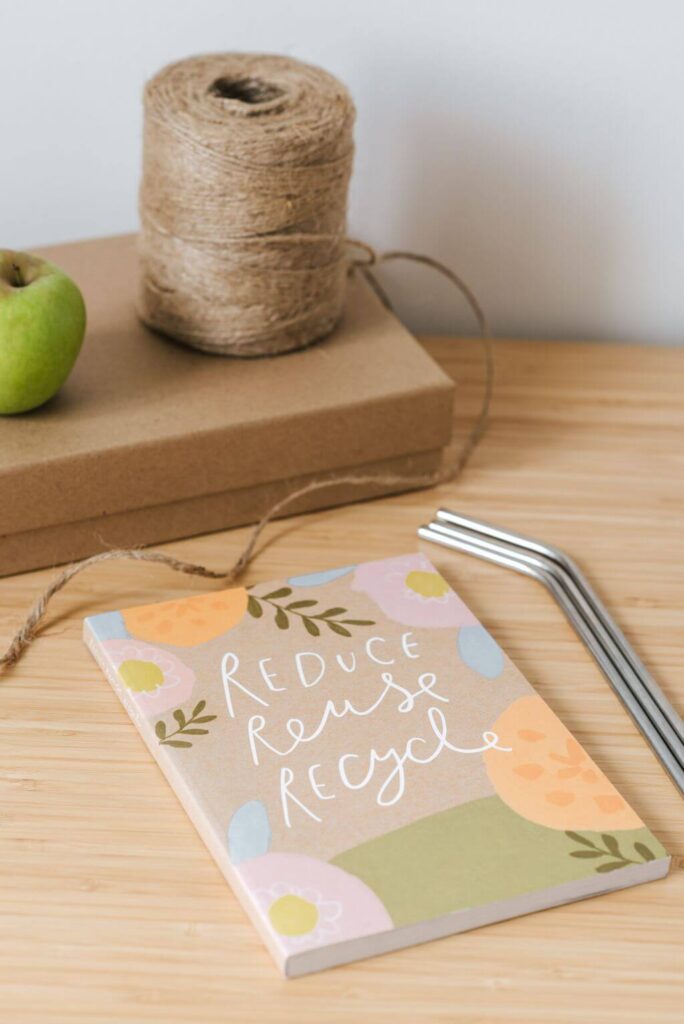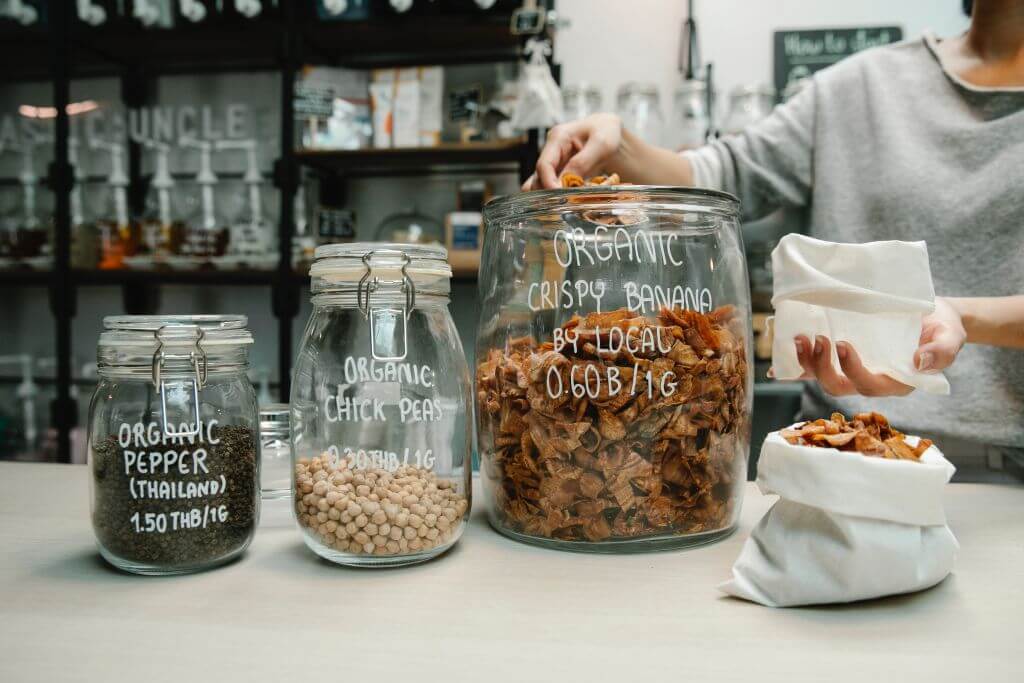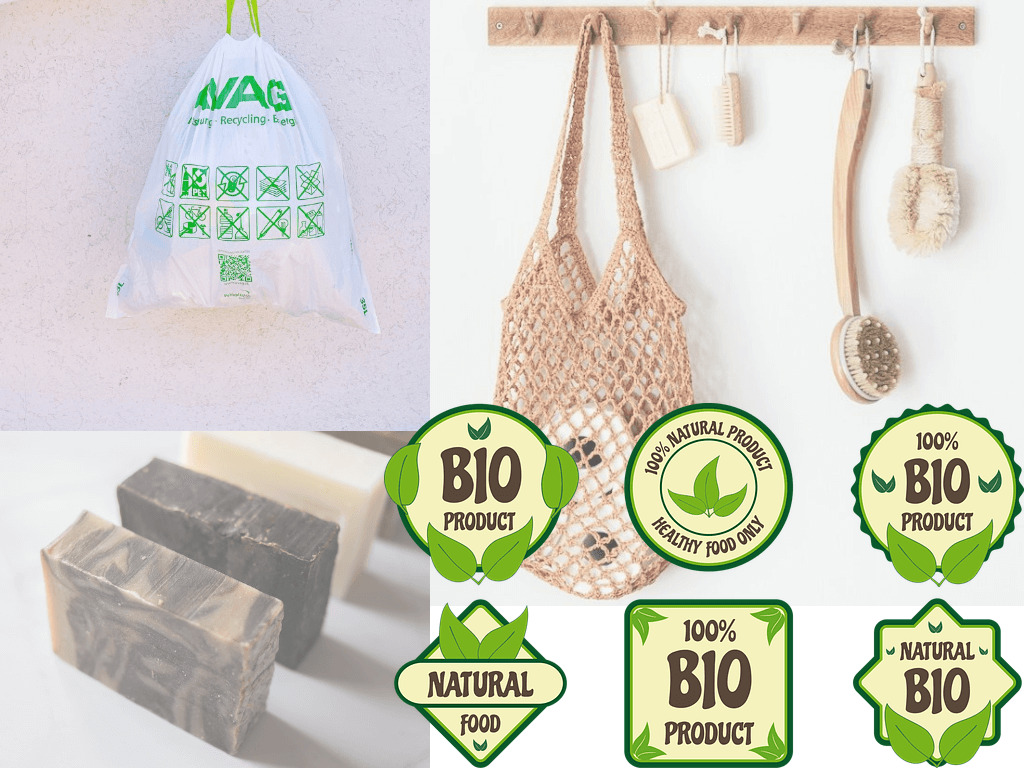Are you overwhelmed by the impacts of global warming on our planet? Do you believe that change is possible if we embrace a more conscious and sustainable lifestyle? Then be the change you want to see by incorporating easy yet effective sustainability tips to diminish your carbon footprint. Agreed, governments and industries need to take immediate action on a global scale to protect Mother Nature, but as a responsible individual, your action is equally essential.
From reducing your food waste to adopting a meat-free diet, from conserving energy to going plastic-free, there are many small and significant shifts you can make to reduce your environmental impact. To guide you in this journey, we’ve prepared curated lists of the best sustainability tips, podcasts, documentaries and blogs. You can seamlessly integrate these tips into your daily routine. Whether you’re a seasoned eco-warrior or just getting started on your sustainability transition, these easy tips will help you big time to lead a more meaningful life. So, let’s get started!

101 Simple and Effective Sustainability Tips for a Greener Future
Sustainability Tips for a Future-Forward Home
- Save energy by using LED lights or CFL bulbs. These energy-efficient lightings can produce up to 90% more proficient light and last 10 times longer compared to incandescent light bulbs.
- Turn off the lights whenever you leave the room, and unplug your appliances when you’re not using them. This is a major cause of energy-drain in houses. In fact, studies have shown that about 35% of residential energy gets wasted by being unmindful of electricity consumption.
- Use solar energy by installing solar panels. Of course, the initial cost is high, but you can save up to $130 per month in the long run. And let’s not forget it reduces your electricity use.
- Air dry clothes on a drying line or rack rather than using a powered dryer.
- Avoid running a washing machine cycle if you have fewer laundry items to clean. Instead, try to hand wash them to save both water and energy.
- Adjust your air conditioning unit or thermostat by increasing the temperature by 7-10 degrees in summer and decreasing it in winter. This can help you save up to 10% on your yearly electricity bill and minimize your carbon footprint.
- Consider adding thermal window curtains to obstruct drafts in the winter and extreme sunlight in the summer. This can keep your home cozy naturally.
- Buy appliances that have good “Energy Star” ratings as they’re designed to attract less electricity.
- During the day, open your blinds wide for natural light to lighten up your home, rather than switching on the bulbs.
- Set up your own rainwater harvesting system by using barrels to collect rainwater. You can use it to water plants in your garden, wash your car, and carry out other cleaning purposes.
- Go for rechargeable batteries for devices like TV remotes, wall clocks, and so on, instead of using old-school, single-use alkaline batteries.
- Consider shopping for refurbished second-hand furniture to amp up your space. This idea will not only help you to design a one-of-a-kind space but is also a sustainable approach to using articles that already exist, thereby limiting fresh production. For outdoor settings, you can go for recycled outdoor plastic furniture.
- Add indoor plants around the house to naturally purify the air and create a relaxed vibe. Setting up a home garden is another excellent idea to grow some organic vegetables, fruits and herbs for your own consumption. Trust me; this process is so therapeutic.
- Whenever it’s time to stock up your pantry, try to take your own bags and bottles to the grocery store or farmer’s market to cut on extra paper or plastic packaging.
- Shop your groceries in bulk to avoid frequent trips to supermarts and stores. You also save a lot of money by doing so.
- Save on water by timing your showers. You can also get a water-saving showerhead.

Sustainable Ideas for a Mindful Kitchen
- Try adopting a meat-free diet. Studies have revealed that a plant-based diet can eliminate the food chain’s carbon footprint by 73%. The nutrients in organic vegetables, grains and fruits decrease the risk of many diseases and cure eating disorders healing your body from the inside. In addition, cruelty-free eating habits significantly reduce energy consumption, deforestation, and the pressure on overfished ponds and oceans.
- If giving up on meat is not an option for you, then support a sustainable food system by trying to learn where your meat/fish/eggs are sourced from. Go for local produce from ethical, grass-fed farms.
- Avoid frozen food. While it’s convenient for busy people to buy frozen food items, the refrigeration duration from the time they were made, to their transportation out of the factories to the supermarts and finally to your home is long enough to cause massive power consumption. Plus, a lot of preservatives are added to frozen food, which is not at all healthy for your gut.
- Shop organic produce from local farmer’s markets to minimize your food transportation carbon footprint. Since these markets focus on seasonal crops, you can get your hands on fresh produce fit for the climate and steer clear of supporting commercialized unnatural agriculture.
- Instead of dining out frequently or getting takeaways, try to treat yourself to home-cooked meals. Research has disclosed that plastic bags and styrofoam containers used for packing takeaways largely contribute to ocean plastic waste and carbon emissions.
- Brew your coffee at home to fully indulge in the aroma of this life-saving nectar. Invest in reusable mesh filters and tumblers while you’re on the go, rather than buying from coffee shops in disposable cups.
- Incorporate the use of washable metal straws instead of single-use plastic straws to cut on waste. Disposable straws are counted as one of the top ten contributors of plastic marine debris worldwide. Carry your own straw and a few extras every time you venture out, so you can use it whenever you get a beverage.
- Invest in plastic-free food storage containers, so that you don’t have to eat food leached with chemicals.
- Repurpose your glass jars as part of your grocery storage or DIY-ing candles and decor items to make the most of everything you already own.
- Instead of using cling films or aluminium foils to wrap your food, opt for low-impact beeswax wraps that biodegrade easily.
- Switch to eco-friendly bamboo dinnerware as they’re biodegradable and have a smaller carbon footprint. Another plus point? Apart from being durable and easy maintenance, they are also stylish and unique.
- Start composting your food scraps to transform them into natural fertilizers for your home garden. This is one of the best sustainability tips that can help you significantly in reducing your food waste.
- Stop using disposable paper towels. While paper is biodegradable, paper towels and tissues contribute to excessive paper waste, which is a major reason for deforestation. Go for reusable dishcloths and kitchen towels. You can also use your old T-shirts for cleaning around the kitchen.
- Wash your dishes in the dishwasher. That might sound confusing, but honestly, dishwashers can save up to 5,000 gallons of water a year. Just make sure it’s a power-saving model and use eco-friendly dishwasher tablets.

Sustainable Living Tips
- Embrace the concept of waste-free living. Buy items when you really need them, repurpose what you already have and turn your food waste and other trash into something useful, thereby generating less garbage, and contributing minimally to greenhouse gas emissions which will ultimately reduce carbon footprint.
- Spend time outside to connect with nature. It will deeply inspire you to do your bit in protecting the planet.
- Adding more whole foods to your diet is another amazing sustainable living tip that can help you see remarkable changes in your health.
- While buying beauty products, always double-check the composition to detect harmful, toxic chemicals that can be hazardous to you in the long run.
- Plant trees around your house and join plantation drives around your city to contribute to a bigger cause of creating a green environment and cutting down carbon emissions.
- If you love to read, buy secondhand books to save them from ending up in landfills. You can also borrow from the library or use book apps to get access to thousands of books.
- Stay informed by reading the latest news online instead of buying printed paper versions.
- For a sustainable living approach, cultivate the habit of preparing home-cooked meals so that you have control over the ingredients’ quality.
- While brushing, cleaning your face or handwashing dinnerplates, don’t keep the water tap running.
- Carry a handkerchief or a small face towel every time you go out, so that you don’t pick up disposable tissues every time you have to wipe your face.
- For a smaller carbon footprint, carry your own glass or stainless steel water bottles, rather than buying single-use plastic ones that are a major cause of plastic pollution.
- Avoid buying products wrapped in plastic bags for sustainable living.
- Shop at zero-waste stores as they offer low-waste and biodegradable packaging options for everything ranging from food to beauty products, and cleaning items.
- Choose to receive digital receipts or notices.
- Discarding appliances and devices while they’re still functional immensely contributes to greenhouse gas emissions. So always recycle your devices through e-waste recycling programs.

Sustainability Pointers for The Bathroom
- Take shorter showers to reduce wastewater generation and water consumption levels at your home.
- Set up a low-flow toilet. They use about 1.28 gallons of water per flush, while older toilets can use up to 7 gallons.
- Use eco-friendly shampoo and conditioner for your haircare needs. Try to either take your own jars to the local co-op for refilling haircare products or opt for recyclable packaging. Studies have shown that in the US alone, 550 million empty plastic shampoo bottles are discarded annually. And we’re not even including conditioner or body wash bottles!
- Switch to zero-waste toothpaste tablets that you can easily buy in bulk and store in spare containers. Opting for green toothbrushes made from bamboo can be a good pairing with toothpaste tablets.
- Shop in bulk for recycled toilet paper.
- For makeup removal, use reusable cotton pads.
- Choose your bathroom and sanitary cosmetics consciously. While purchasing such items, read the fine print to avoid harsh chemical ingredients in your skincare and haircare products that are both bad for you and the planet. Opting for organic products is the best you can do.
- Buy products that don’t have palm oil in them. Scientists have discovered that palm oil is a significant driver of deforestation, along with fueling air pollution, water pollution, and biodiversity loss.
- Use eco-friendly period panties or menstrual cups. It is estimated that a single menstruating woman can throw away about 400 pounds of period products. Sanitary pads and tampons can take years to biodegrade, but menstrual cups and period panties are amazing low-waste and hygienic alternatives.
- Use eco-friendly cleaners and rainwater collected in barrels to clean your washroom and toilet.

Sustainable Cleaning Directions
- To reduce carbon footprint, deal with waste by incorporating the 5 R’s: Reduce, Refuse, Reuse, Recycle, and Rot. Learning to dispose off your waste efficiently can substantially impact minimizing the number of items sent to landfills.
- Choose organic green products as cleaning essentials for your home. Unfortunately, most disinfectants in the market are made of toxic chemicals that are not only harmful to you, but also to wildlife. As the wastewater generated from your cleaning, ends up in oceans, lakes and ponds, thereby, contaminating these waterbodies.
- Convert your home into a safe space by making your own DIY cleaners with natural, low-impact ingredients. Baking soda, vinegar and lemon juice are some cheap natural cleaning agents that can be used to sparkle multiple surfaces.
- Use microfibre cleaning cloth or old cotton tees as they cut back on your use of excessive cleaners.
- Swap plastic spray bottles for glass spray bottles, because they last longer and help keep your home plastic-free.
- Use compostable or recycled trash bags for collecting garbage. They’re way better than virgin plastic bags that take nearly 1,000 years to degrade in landfills.
- When running a laundry cycle, use cold water instead of hot water. Around 90% of the energy the washing machine uses goes towards heating the water. A cold wash cycle not only saves energy but also reduces wrinkles and fading of your clothing.
- Get a microfiber-catching wash bag. It is found that every time we launder synthetic garments, an average of 9 million microfibers gets released into wastewater. Most washing machines do not come equipped with a microfiber filter, and wastewater treatment plants are unable to filter the water properly, which means they ultimately end up in the oceans.
- Clean your microwave by heating a small bowl of water and lemon juice. Once steam forms on the inside, wipe them clean with a cloth, and you’re done.
- In order to tackle limescale, de-scale the taps and showerheads by soaking a cloth in a solution of distilled white vinegar and water. Wrap this cloth around them overnight. Rinse and dry the taps and showerhead in the morning for shinier results.
- For cleaning sinks, bathtub and tile grouts, use a solution of baking soda castile soap to brighten, deodorize, and lift dirt, grease, and bacteria.

Sustainability Tips for Conscious Fashion
- Buy slow fashion classic clothes from reputed sustainable brands. Since these garments are designed in timeless silhouettes and are made from kind-on-the-earth, durable materials, they will last you longer, surpassing fleeting fashion trends.
- Become a smart dresser by building yourself a capsule wardrobe that suits your personality.
- Avoid impulse-shopping. Instead, shop only when you’re sure of what you need, so that you don’t end up buying something you would never wear.
- Support ethical and environmentally conscious fashion brands that are mindful of their practices and give back to the planet in some way.
- Know your fabrics! This will help you to get the best out of the clothes you own or are planning to buy. Nothing beats the comfort and durability of high-quality natural materials.
- The more you wash your clothes, the sooner they’ll fade. All in color, structure and texture. So reduce your wash cycles. Air dry clothes to freshen them up, after wearing them out every time.
- For a smaller carbon footprint, donate your old clothes or repurpose them as rags for cleaning chores
- Repair and Reuse! Learn basic sewing skills to fix holes and sew buttons. If it’s about damages you can’t patch up, then visit your nearest alteration shop to get the job done.
- Whenever you feel like adding some pieces to your wardrobe, try to shop secondhand from your local or online thrift stores. These shopping spots are packed with vintage styles and garments from popular brands that are in good condition and are definitely eligible for a second life. Landfills receive nearly 11 tons of textile waste every year, but thrift shopping supremely helps in keeping clothes in circulation.
- Amp up your old clothes into new styles by DIY-ing them. For instance, a denim you no longer wear can be turned into shorts, or a dress that you haven’t worn for a while can be transformed into a top and skirt.

Sustainable Tips to Raise a Baby Responsibly
- Switch to eco-friendly reusable cloth diapers for your little ones. Surveys have revealed that disposable diapers are the third largest single-use consumer items found in landfills, constituting nearly 4% of solid waste and emitting substantial greenhouse gas emissions.
- If you are able, try to breastfeed to raise a healthier child. The carbon emissions and environmental impact caused by just 4 months of exclusive infant formula feeding make up to 35% to 72%, which is higher than 4 months of exclusive breastfeeding. So when you choose to breastfeed, you ultimately help in cutting the excess packaging, heating, and transportation that goes into the formula food production cycle.
- Feed your baby in glass feeding bottles or insulated stainless steel bottles that do not seep in chemicals and are easier to reuse, unlike plastic ones.
- For all-round development, supplement your baby’s diet with homemade baby food. Consult a pediatrician to get the know-how of your baby’s nutritional needs and make formulas yourself with the best of organic ingredients.
- For your baby’s body moisturizers and diaper balms, use the good old virgin coconut oil.
- Choose to go for reusable nursing pads.
- Don’t shop for plastic toys that are made of harmful synthetics and are toxic to both the children and the environment. Instead, introduce them to eco-friendly toys made from natural materials like wood or bamboo.
- Sourcing second-hand toys or joining a toy library is another good idea to save some bucks and keep a check on excess toy production.
- Use pacifiers made from natural rubber to reduce carbon footprint of your child.
- Say No to baby wipes. Opt for reusable cloth wipes. Wet wipes usually make their way to oceans from sewers and are often ingested by aquatic creatures. However, the impact of eco-friendly baby wipes are found to be 38% lower than petroleum-based wipes.
- As a responsible human, make sustainability teaching a part of your child’s life from the very start. The most conscious thing to do as a parent is to raise a child who understands the values of a healthy relationship between mankind and the environment.

Eco-friendly Tips for Pet Owners
- Adopt, Don’t Shop! Save a life by adopting strays or abandoned pets from shelters. According to a report by ASPCA, 6.3 million cats and dogs enter the U.S. animal shelters nationwide. The lack of people coming forward to give them a home leads to around 920,000 of these companion animals being euthanized yearly. So, don’t buy from breeders and become part of the cruel commercialized breeding industry. There are already so many orphaned dogs and cats out there, in need of a home!
- Choose to buy sustainable pet toys made from natural materials such as rice husk, rubber, hemp or recycled materials. You can also DIY playthings for them by using your old T-shirts.
- Every time you take your dog on a walk, make it a habit of picking up their poo in biodegradable waste bags. Unlike their plastic bags counterpart, green poo bags can dissolve in water within three months.
- For your cats, choose eco-friendly cat litter that are made from wheat-based, walnut-based, and wood-based alternatives.
- Get your pets spayed/neutered to keep their population in control as this practice drastically helps in reducing the amount of resources needed, thereby minimizing greenhouse gas emissions.
- Feed sustainable pet food to your furbabies. Try to keep them on a homecooked diet made from locally sourced ingredients and supplements. This will not only keep them healthy but will also help you to reduce carbon footprint linked with pet food production, which is about 106 million tons of CO2.

Sustainability Tips for Low-Impact Travelling
- Use a bike for shorter commutes. Estimates have shown that moderate increases in bicycle use every year could save up to 6 to 14 million tons of CO2 and conserve a substantial amount of natural fossil fuels. Plus, owning a bike is easy on your pocket too. A win-win for all!
- Use public transportation whenever possible, as this can significantly help reduce carbon emissions by 20 pounds per day.
- One of the best sustainable travel tips is choosing to walk for shorter routes. Like going to a nearby park or grocery store or your workplace, kid’s school, and so on. Walking immensely benefits your mental and physical health, and of course, it is better for the planet’s health as well.
- Electric-powered vehicles are an amazing investment that can help you achieve a smaller carbon footprint. They are equipped to release fewer greenhouse gas emissions compared to petrol or diesel cars. Just ensure to use them mindfully because they are built with difficult-to-recycle batteries, which leave an environmental impact when discarded.
- The aviation industry generates about 2.5% of global carbon emissions annually. So, whenever possible, opting for trains and buses is a brilliant idea to travel responsibly.
- Plan sustainable holiday trips. Eco-tourism supports resource and wildlife conservation while aiding the local economy of particular regions. There are an ample number of sustainable travel agencies and resources over the internet to assist you in curating low-impact tours.
- Get your hands on green travel-friendly products, such as reusable cutlery, stainless steel water bottles, and takeaway containers to limit your exposure to plastic usage.
- Opt for carpooling with your friends or colleagues to commute to work, events and other places. For interstate travel, you can easily connect with people commuting to the same location.

Why is Adopting a Sustainable Lifestyle So Important?
Our planet has changed drastically in the last few decades. From technological advancements and economic developments to a surge in demographic growth— everything has led to soaring demands for natural resources. But, with Planet Earth’s well-being at stake.
With all that nature has selflessly provided for us, it is only sensible to do our part in reviving our ecosystem by finding ways to safeguard biodiversity and combat climate change. And sustainability tips can symbolically help us in this worthy endeavour.
- According to the United Nations 2022 report, the current global population has officially reached 8 billion. And future projections have calculated this number to touch 9.7 billion by 2050. If this stat doesn’t scare you, I don’t know what will, because should this occur, mankind would need natural resources equal to almost that of three planets for maintaining the current human lifestyle. But, we only have One Earth.
- The planet is facing a climate crisis, and natural reserves are being depleted at an alarming rate. Whether it is deforestation, extensive burning of fossil fuels for energy generation, large-scale agriculture or landfills clogged with discarded articles, our environment is getting destructed with every passing day. But there’s still hope. Adopting sustainable practices and making informed choices can help us reverse climate change.
- Unsustainable practices often lead to environmental degradation and pollution, which can have severe consequences on human health and well-being. By living sustainably and reducing our carbon footprint, we can help to mitigate the effects of climate change, air and water pollution, and other environmental issues.
- Excessive usage of freshwater for agricultural purposes is drying up natural reservoirs like ponds, lakes, and springs. Therefore, communities living nearby these regions and even cities are suffering from a scarcity of clean drinking water. In addition, water bodies are getting contaminated with chemical and physical toxins. Every day, an average of 2 million tons of sewage, industrial and agricultural waste are released into our water system, killing millions of species. So, limiting water consumption by every individual is a must.
- Apart from conserving the environment, living sustainably can have economic and social benefits. Practising a waste-free, eco-conscious life can help us in saving money on energy and resource usage, and can promote healthier, more equitable communities around the world.
Final Thoughts…
Sustainable living is simple! All it requires is your ‘will to be better’ instead of being ‘careless,’ with your lifestyle choices and sustainability tips can be your influencing factor. Small changes can make a big difference, and everyone can promote sustainability, even if it’s with the tiniest effort. Remember, every action counts, so no matter how little your contribution is, it can help bring valuable change. We have only one home— Let’s give it all to protect it!







